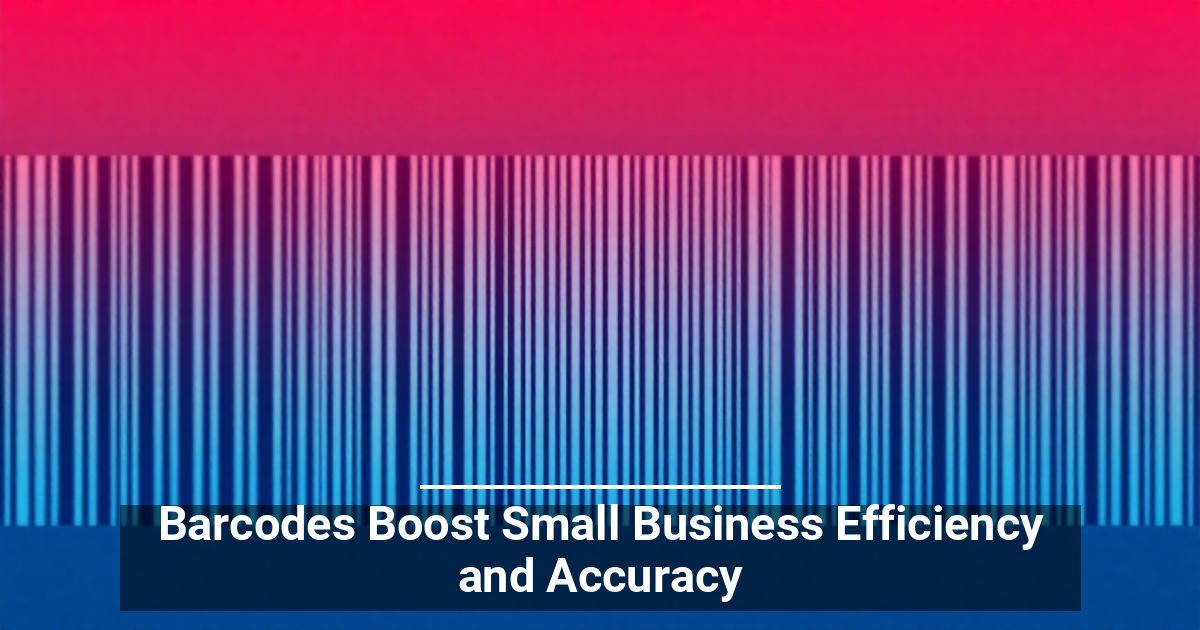
Unlocking Efficiency with Barcode Technology and IT Support
Have you ever wondered how small changes could make a big difference in your operations? Barcodes are one of those tools that seem simple but deliver powerful results. When combined with managed IT services, outsourced IT support, and compliance services, barcode technology becomes a cornerstone of small business IT solutions.
What Is a Barcode?
A barcode’s most basic form is a combination of vertical black lines of varying thickness, height, and white spacing to create a rectangle or square with numbers underneath. These unique patterns represent products and their relevant data. Computers linked to scanners can read the codes and retrieve data for that item.
We often associate them with goods from retail stores and supermarkets, but they’re also useful for rental cars, checked luggage, and licenses. In these cases, they identify individuals or transactions.
Revolutionizing Industries With Barcode Scanning
Barcodes are more versatile than the average small business owner might assume. In warehouse settings, they track an item’s size, quantity, location, and other attributes so managers can easily gauge the current inventory and see which products might need restocking.
Clinics use medical tags to match patients with medications and procedures, which reduces the need for manual checks. This is especially critical in secure IT for healthcare environments where compliance services are essential. Retailers scan items at checkout to provide accurate pricing for customers, while manufacturers can track their goods across their lifecycle, from production and delivery to post-service repairs.
Essentially, any operations that involve tracking or managing resources can benefit from this technology. With the support of IT help desk services, businesses can ensure barcode systems are properly maintained and integrated into their broader IT infrastructure.
Is Implementation Worth It for Small Businesses?
A company with fewer resources might worry about the upfront costs or complexity, but the long-term advantages far outweigh any initial concern:
Increased Productivity
For businesses managing only a handful of employees, even the smallest kink in their workflow makes a significant impact. Sluggish manual data entry, fixing errors, and miscommunication slow everything down. Automated transaction and inventory tracking mean more time for your team to focus on more specialized work. Managed IT services can help streamline these processes and ensure barcode systems are optimized for performance.
Operational Accuracy
A published study, titled “Observations on Typing from 136 Million Keystrokes,” revealed that even highly proficient data-entry workers have an error rate of one in every 250 keystrokes. Humans also get tired, distracted, or overwhelmed, which increases the likelihood of errors, especially under tight deadlines.
According to the same research, barcode technology, on average, makes one error after scanning 5,000 to 36 trillion characters. Which option would you trust more? With outsourced IT support, businesses can implement and maintain barcode systems that reduce human error and improve operational accuracy.
Real-Time Data
Every time one of your employees scans a code, it immediately updates sales numbers and inventory in your stock management or point-of-sale system. This gives managers and executives easy access to update information on their stock-keeping unit (SKU) systems, like what’s selling fast, what’s running low, and where adjustments are necessary.
Scalability
If you’re ready to expand your business through new branches, you need solutions that grow with you. Many platforms allow you to effortlessly add users, locations, and additional features as needed. Similarly, you can scale down when needed to match changing demands. Small business IT solutions provided by managed IT services providers ensure barcode systems can scale with your business.
Compliance and Security
In industries like healthcare and finance, compliance services are non-negotiable. Barcode systems help maintain accurate records and reduce the risk of data breaches. Secure IT for healthcare environments relies on barcode technology to ensure patient safety and regulatory compliance. Managed IT services can help implement these systems in a way that meets industry standards.
Support and Maintenance
IT help desk services play a crucial role in supporting barcode systems. From troubleshooting scanner issues to integrating barcode data with inventory software, having reliable IT support ensures your operations run smoothly. Outsourced IT support provides access to experts who can manage these systems without the need for in-house staff.
Conclusion
Barcodes simplify inventory management, reduce errors, and improve overall efficiency. When paired with managed IT services, outsourced IT support, and compliance services, they become a powerful tool for small businesses. Whether you're in retail, healthcare, manufacturing, or logistics, barcode technology can help you unlock new levels of productivity and accuracy.
Don't wait to streamline your operations. Invest in barcode systems and partner with a trusted IT support provider to ensure your technology works for you—not against you.


